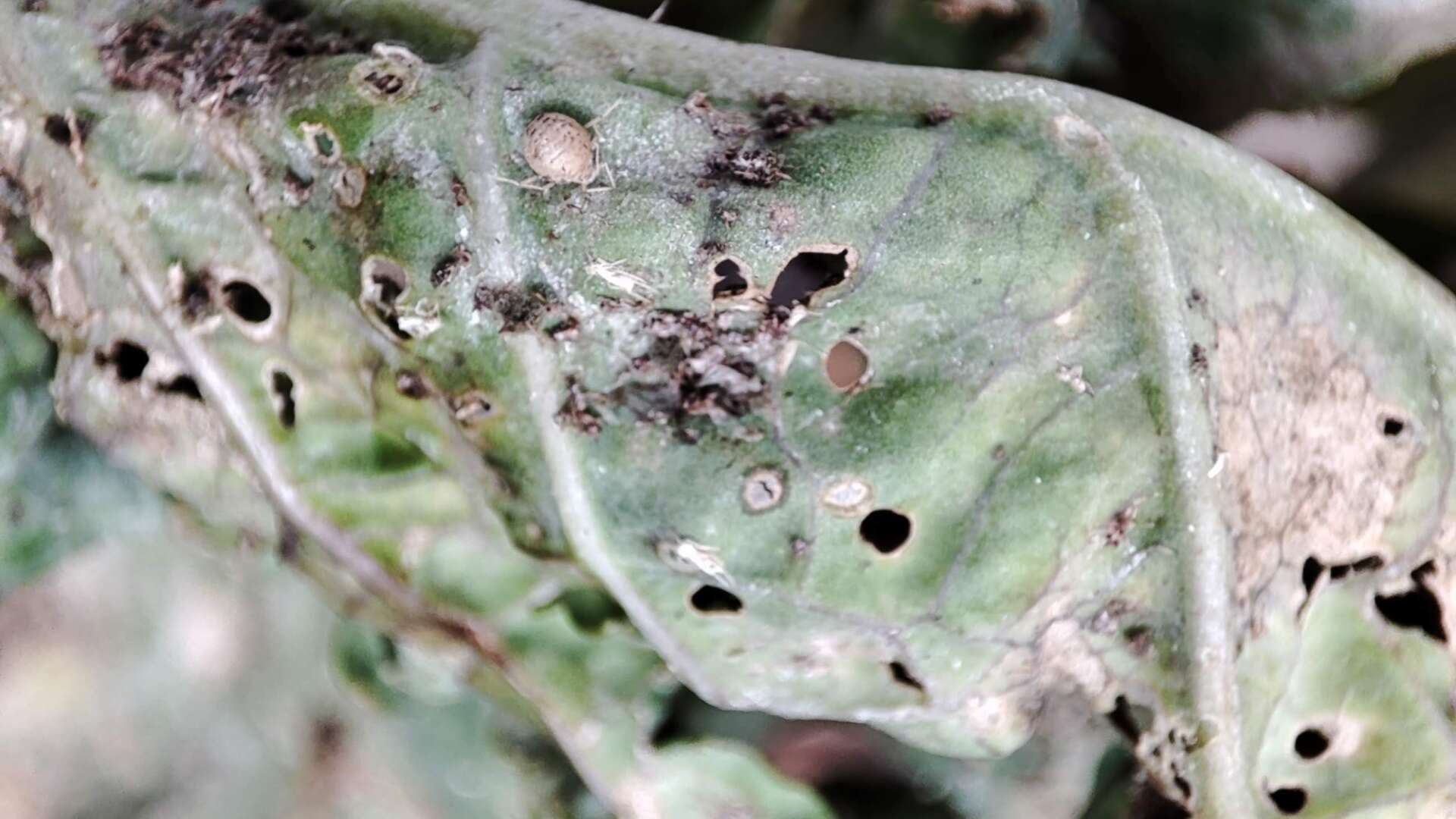Exploding Aphid Hunt

This year we've offered a variety of experiments to our members and now we are opening our final experiment 'The Exploding Aphid Hunt' to anyone growing brassicas, such as kale or cabbage with an interest in insects. Sign-up is now open, and we'd love for as many of you to join us as possible, perfect for both new and experienced growers.
What we want to find out:
Cabbage aphids (Brevicoryne brassicae) are the furry grey aphids that litter your brassica plants such as kale, cabbages, and brussels sprouts. They feed on the leaves causing damage, distorted growth, and spoilage. We are well aware of some of the more obvious predators that can control these pests such as ladybirds and hoverflies, but far less aware of some of the more inconspicuous creatures. One is a tiny black parasitic wasp, Diaeteriella rapae. The wasp injects its eggs into aphids, where the larvae grow, pupate then the adult wasp bites a hole to exit, in true ‘Alien’ style.
Once you know what you are looking for, the aftermath of this wasp is easy to spot. We would like you to observe cabbage aphids in your garden and report back where you see that this wasp has been in action.
This parasite has been well studied in agricultural and commercial horticulture environment settings, but there is less information in a small-scale domestic context. We would like to build up a picture of when and where in the UK this wasp is active in gardens and allotments. It will also help to raise awareness of the importance of various biological control factors so that gardeners are less likely to feel the need to use insecticides.
What is a cabbage aphid?
The cabbage aphid (Brevicoryne brassicae) is recognisable as a tiny grey aphid that produces a powdery, waxy coating that spreads amongst other aphids and on the leaves. For this reason, it is sometimes known as the mealy cabbage aphid. Unlike some aphids that feed on a range of plant families, cabbage aphids are picky about what they eat and only feed on brassica plants such as cabbage, kale, broccoli, turnip, swede, and rocket.
When do you find cabbage aphids on your plants?
Cabbage aphids can be found on plants at any time of year, although you will mostly see them from around April to October. Cabbage aphids overwinter on brassica plants, unlike many other aphids that find alternative plants over winter.
What creatures attack cabbage aphids?
A wide range of predators attack cabbage aphids, including adult and larval ladybirds, hoverfly larvae, lacewing larvae, ground beetles, and birds.
Introducing the parasitic wasp
Another predator is the small parasitic wasp, Diaeretiella rapae. This small wasp is relatively unremarkable in appearance, black in colour, and only a few mm long. It injects its eggs into the aphid, where the egg hatches after 2 – 3 days. The larva feeds on the body fluids and tissues of the aphid until it has reached full size, and only the outer shell of the aphid remains. The larva then pupates, and the adult wasp cuts a hole in the aphid to escape, leaving the empty shell of the aphid behind. These empty shells are visible as pale, swollen aphids and are sometimes known as 'mummies.'
Why are we studying parasitic wasps?
Parasitic wasps have been studied in field situations, but little work has been done in a garden setting. To address this, we would like as many people as possible to participate in our Exploding Aphid Hunt to help us answer questions such as when and where the wasp is most active and whether there are types of garden practices that benefit these wasps?
How to take part
It is really simple to get involved and all you need to do is regularly observe the populations of cabbage aphids on brassica plants and what proportion of them have been attacked by this parasite, then let us know what you find. They are very easy to recognise, and we will provide you with information to help you. Anybody growing some brassicas in their garden or allotment can take part.
Next steps:
- Register your interest by filling out this short questionnaire about your garden or allotment here. (If you wish to record both in your garden and allotment, please fill out two separate forms with different postcodes so they can be identified later.)
- Start to record cabbage aphids and how many have been parasitised using our simple assessment key (you don't need to spend a long time counting them).
- Please try and stick to monitoring the same crop throughout the season. You can monitor more than one crop just by creating another entry.
- Record observations once a week - Please record an entry even if there are no aphids present.
- Monitor your crops until the end of September, when the experiment finishes.
If you'd like to be involved and this sounds like the experiment for you, you'll find your aphid factsheets, recording forms as well as further details and sign-up information here. We look forward to having you onboard!
Join us today for just £2.75 a month, become part of a sustainable future, and access future member experiments.